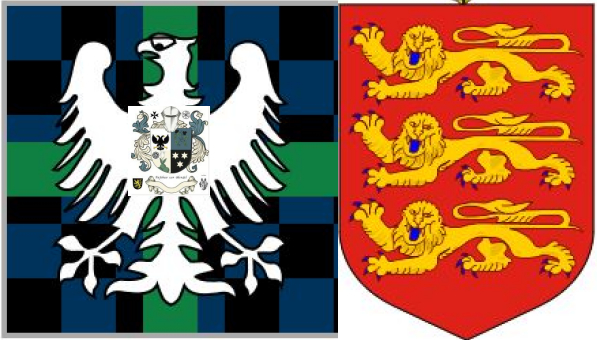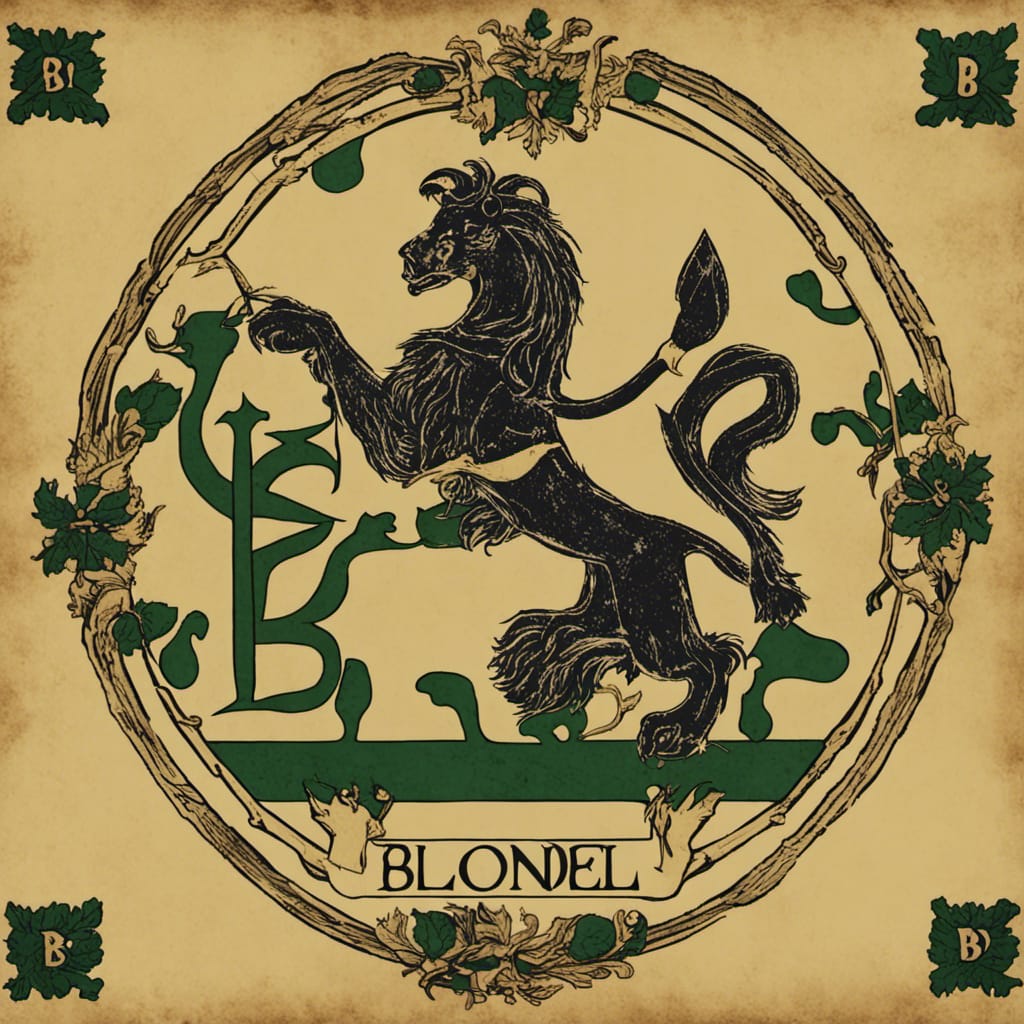


Mardi Gras Carnival of Fief Blondel - Oldest Fief Carnival
Each year the Fief Blondel has a King and Queen of Carnival. Part of the Frankish Norman tradition
for over 600 years, the Fief Celebrates Carnival on Mardi Gras French and Frankish Carnival or Mardi Gras dates as far back as year. 1294 in places like Nice, Paris and West Germany. Mardi Gras which is also called Shrove Tuesday or Fat Tuesday in English The earliest records in France establish its existence in 1294 when the Count of Provence, Charles Anjou, wrote that he had passed "the joyous days of carnival. Mardi Gras refers to the Carnival celebrations, beginning on or after the Christian feasts of the Epiphany (Three Kings Day) and culminating on the day before Ash Wednesday.
The Early History of Mardi Gras and KarnevalFirst of all, The Roman Papacy, which paid great attention to converting popular pagan customs for Christianity and is said to have retained the pagan festival Saturnaliaunder the name of Fasching “English = Fasting Eve” or (Carnival.). While Mardi Gras is distinctively French, the West German Frankish counterpart is called Fasching Fastnacht or Karneval. Although the exact historical origins of the festivities of Fasching are unclear, the observance of its rites is mentioned in Wolfram von Eschenbach's Parzival (early 13th century). Karneval is a Latin based term that comes from the “carnem levare” (to give up meat). 1234 AD ~ Carnival or Karneval festival originated in the cities such as Mainz and Speyer—and was already established in Koln/CologneGermany by year 1234 according to Encyclopedia Britannica. As a note, the city of Mainzis the “Designated Holy See (sancta sedes ) North of the Alps” of the Roman Catholic Church. Further, the city of Speyeris an ancient capital city of the Holy Roman Empire which is near the border of France on the Rhineland side of the border. In Medieval Bavaria and Germany, during Fasching or Fastnacht all people were allowed to be their own masters for the three days before Passion Week. The subjected classes were then allowed to drink to the dregs all pleasures within their reach, to ridicule and parody human and divine laws and ceremonies, without the slightest restraint. The clergy even joined in with the masses. There were generally crazy days “Tolle Tage”, andafter that people were tired and ready to repent for lent. 1294 AD ~ The Frankish Carnival or French Mardi Gras dates as far back as year 1294 in places like Nice, Paris and other parts of West Germany, Switzerland and Austria. Mardi Gras is also called Shrove Tuesday or Fat Tuesday in English. The earliest records in France establish its existence in 1294 when the Count of Provence, Charles Anjou, wrote that he had passed "the joyous days of carnival.” Mardi Gras refers to the Carnival celebrations, beginning on or after the Christian feasts of the Epiphany (Three Kings Day) and culminating on the day before Ash Wednesday. 1699AD ~ According to History.com, The first American Mardi Gras took place on March 3, 1699, when French explorers Pierre Le Moyne d’Iberville and Sieur de Bienville landed near present-day New Orleans, Louisiana. They held a small celebration and dubbed their landing spot Point du Mardi Gras. Many people refer to Mardi Gras Day as Pancake Day particularly in the British Empire. Pancake Day, or Shrove Tuesday, is the traditional feast day before the start of Lent on Ash Wednesday. Lent – the 40 days leading up to Easter – was traditionally a time of fasting and on Shrove Tuesday, Anglo-Saxon Christians went to confession and were “shriven” (absolved from their sins). As for today, Carnival appears to be celebrated in many European countries and over 40 nationsaround the world. To read the history of Louisiana Mardi Gras or Fat Tuesday, go to: https://www.history.com/topics/holidays/mardi-gras
|
Seigneur de la Fief of Blondel Lord Baron Mentz of Fief Blondel Geurnsey Crown Dependency Seigneur Fief of Blondel George Mentz Lord Baron of Fiefdom Blondel Freiherr of Fief Thomas Blondel Feudal Lord of Baronnie - Noble Fief Barony Friherre > Carnival Mardi Gras Fief Blondel Seigneurs and Dames Travel Research Lord Paramount Feudal Barons The Seigneur Order Patron George Mentz Charter of Liberties Deed & Title Fief Blondel Islands Viking Kingdom Fief Worship Fiefs of the Islands ECS Extended Continental Shelf Styles and Dignities Territorial Waters Blondel Privy Seal Fief Bouvees of Fief Thomas Blondel Guernsey Court of Chief Pleas Fief Court Arms Motto Flower Fief de l'Eperon La Genouinne Kingdom of West Francia Fief DuQuemin Bouvée Phlipot Pain Bouvée Torquetil Bouvée Bourgeon Bailiwick of Ennerdale Channel Island History Fief Direct from the Crown A Funny Think Happened On the Way to the Fief Guernsey Bailiwick of Guernsey - Crown Dependency Confederation des Iles Anglo-Normandes Sovereignty Papal Bull Research Links Norse Normandy Order of the Genet Order of the Genet Order of the Star Est. 1022 Knights of theThistle of Bourbon Count of Anjou Fief Rights Blondel and King Richard Press Carnival Manorial Incidents Appointments of Seigneurs Store Portelet Beach Roquaine Bay Neustrasia Columbier Dovecote Fief Blondel Merchandise Fief Blondel Beaches Islands Foreshore Events Fiefs For Sale Sold Lords of Normandy Fief Coin Viscounts de Contentin Fief Blondel Map Feudal Guernsey Titles Board of Trustees The Feudal System Hereditaments Chancellor Flag & Arms Fief Videos Guernsey Castle Sark Contact Advowson Site Map Disclaimer Freiherr Livres de perchage Lord Baron Longford Income Tax Guernsey Valliscaulian Order Saint Benedict of the Celestines Society of Divine Compassion Dictionary Count of Mortain Seigneur de Saint-Sauveur Seigneur of Fief Ansquetil Top Success Books Datuk Seri George Mentz Order St. Benedict OSB Celestines Order of the Iron Crown Order of the White Falcon Colonel Mentz Order Red Eagle Order St. Louis Order Holy Ghost Order of Saint Anthony Order of the Black Swan Order of St Columban Order of the Iron Helmet Livonian Brothers of the Sword Fief treizième and Direct from Crown Valuation Fief Blondel Prince of Annaly Teffia
Feudal Lord of the Fief Blondel of the Nordic Channel Islands Guernsey Est.
1179
Feudalherr - Fief Blondel von der Nordischen Insel Guernsey Est. 1179
New York Gazette - Magazine of Wall Street -
George Mentz -
George Mentz - Aspen Commission - Mentz Arms
Counselor George Mentz Esq. - Seigneur Feif BlondelBaron Annaly Baron Moyashel Grants to Delvin About Longford Styles and Dignities The Seigneur Court Barons Fiefs of the Islands Longford Map The Island Lords Market & Fair Fief Worship Channel Island History Fief Blondel Lord Baron Longford Fief Rights Fief Blondel Merchandise Events Blondel and King Richard Fief Coin Feudal Guernsey Titles The Feudal System Flag & Arms Castle Site Map Disclaimer Blondel Myth DictionaryMentz Scholarship Program 101 Million Donation - Order of the Genet Knighthood |





George Mentz Education -
Commissioner George Mentz
-
https://finance.yahoo.com/news/commissioner-george-mentz-clinches-influencer-180000705.html
-
George Mentz News -
George Mentz Net Worth - George Mentz Noble Tilte -
George Mentz -
George Mentz Trump Commissioner -
George Mentz Freiherren Count Baron -
George Mentz Global Economic Forum -
George Mentz Donates Millions
